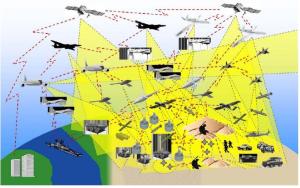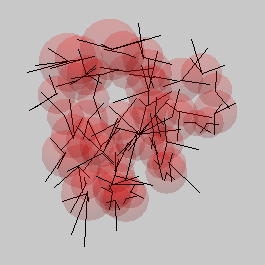You are currently browsing the category archive for the ‘natural resources’ category.
Bacillus pasteurii is a “microorganism, readily available in marshes and wetlands, [that] solidifies loose sand into sandstone.” Check out a BLDG BLOG post about a proposal for the Sahara desert here.
“The structure is made straight from the dunescape by flushing a particular bacteria through the loose sand… which causes a biological reaction whereby the sand turns into sandstone; the initial reactions are finished within 24 hours, though it would take about a week to saturate the sand enough to make the structure habitable. The project – a kind of bio-architectural test-landscape – would thus go from a balloon-like pneumatic structure filled with bacillus pasteurii, which would then be released into the sand and allowed to solidify the same into a permacultural architecture.”
The final result can also be imagined by observing Tafoni stone formations, even though in this case it’s erosion rather than aggregation that’s taking place. There’s some of this stone in Germany, actually.
-yb
1. Build a Dam
2. Inject Liquid Into the Ground
3. Mine a Lot of Coal
4. Drill a Gusher Dry
5. Create the World’s Biggest Building
via WIRED
-le
Power and Alliances As surveillance technology becomes smaller and cheaper, large corporations are gaining more control over space. Presence in space has long been equivalent with power on Earth because it increases control over political, economic, and military landscapes. In the YB LE DN system, the Nation-State and its boundaries will no longer be prevalent, it is the PMC (private military company) in control of advanced technologies that will have power.
satellite constellation: When 2 or more organizations partner across borders in order to allow for constant monitoring of a certain region as their satellites orbit the earth.
Turkey New satellite technologies could be “especially meaningful for a country like Turkey which has a large area for natural resources monitoring and development, as well as a sensitive geopolitical position which makes it important to observe the region for security and defense.” – from the article The Place of Small Satellites In Fulfilling The Earth Observation Requirements of a Developing Country
DARPA’s Transparent Earth initiative The Pentagon is investing $4 million into the creation of real-time, 3-D maps that display “the physical, chemical and dynamic properties of the earth down to 5 kilometer depth.” Detecting sub-surface activities would allow for early responses to dramatic natural disasters, but also targeting enemies in UGF’s (underground facilities). Depending on who gets their hands on the technology, this greater transparency could also amount to stealing natural resources . Check it out on WIRED.
Image from Danger Room
Total transparency will be the result of all these systems (synthetic aperture radar, optical, video, acoustic sensors, moving target indicators) forming a network (or constellation) to provide real-time information on military operations, hidden agencies, geographic substrates, climate, etc.
DARPA wants to use these technologies in addition to crowdsourcing to enhance the knowledge of the system. But, they also feel crowdsourcing would provide validation – drawing on as many sources as possible provides “validation in environments that may be partially compromised by adversaries.”
-le

“This morning’s devastating earthquake in Chile (8.8 on the Richter scale) had an energy equivalent of approximately 15.8 gigatons of TNT (31,600,000,000,000 lbs). To put that in perspective, it is about as much energy as would be released by 300 of the largest thermonuclear bombs ever built (the USSR’s Tsar Bomba, detonated in Novaya Zemlya in 1961).”
Someone’s post about today’s earthquake. I just thought it would be interesting to keep exploring the energy aspect of these natural disasters, especially in terms of man-made bombs. Check out how small Hiroshima is in comparison.
-yb
From Wikipedia:
Lithification is a process of porosity destruction through compaction and cementation. Lithification includes all the processes which convert unconsolidated sediments into sedimentary rocks. Petrification, though often used as a synonym, is more specifically used to describe the replacement of organic material by silica in the formation of fossils. In geology consolidation is a synonym for lithification.
A library of simple diagrams of geological processes.
The aesthetics of striation as a result of lithification.
The aesthetics of tafoni as a result of erosion.
Modelling of compaction (packing) (also, lithification) through computation.
-dn
Shewanella bacteria has been found to produce semiconducting nanotubes produced, which is a huge step in the way to nanoelectroc devices. The process they follow is biological rather than chemical, which indicates a more environmentally friendly manufacturing process for electronic materials.
-yb











